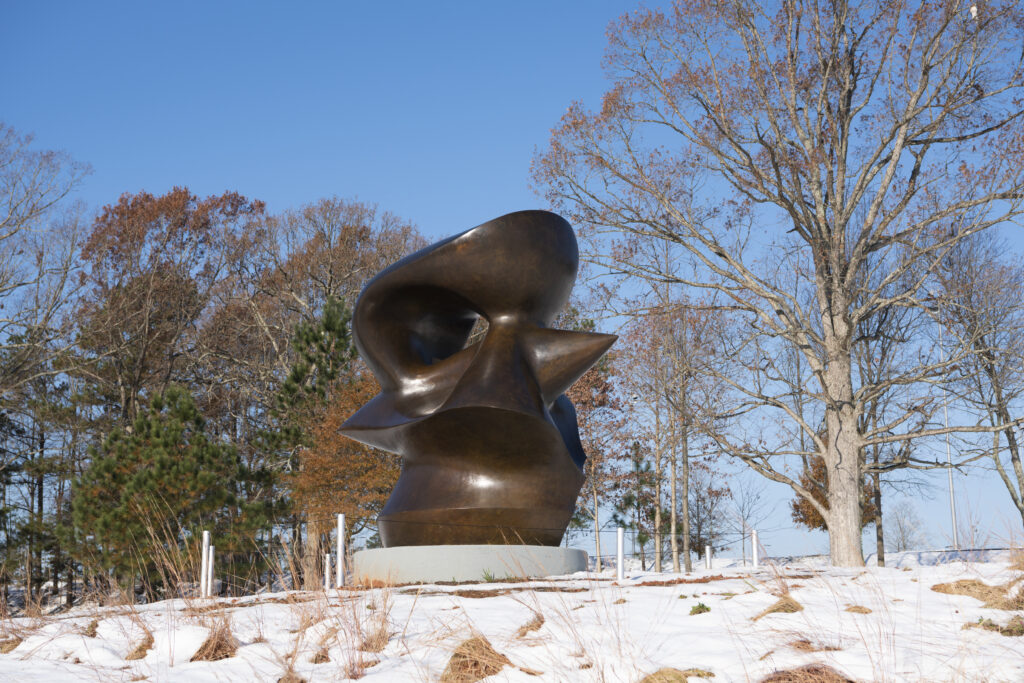Large Spindle Piece (work of art)
Artwork Info
Key Ideas
- This is an abstract bronze sculpture. Abstract art is a style of art that does not attempt to represent objects and forms realistically.
- This work is also an example of expressionist art. Expressionist art often depicts flat and distorted forms that express the artist’s personal view.
- The sculpture’s form was inspired by a pebble and a detail in Michelangelo’s painting on the ceiling of the Sistine Chapel.
- Henry Spencer Moore was a sculptor known for creating abstract works in bronze. He is considered to be one of the most important British artists and sculptors of the 20th century.
- Moore often used found objects that he covered in clay to create small models or figures for his sculptures. A small model of a sculpture is called a maquette. Moore created a maquette of this sculpture before he created the larger, final version and cast it in bronze.
Learn More
Large Spindle Piece was inspired by a flint pebble that the artist found near his home in Hertfordshire, England, and by a detail in Michelangelo’s painting of God’s hand reaching out to Adam’s finger on the ceiling of the Sistine Chapel. The sculpture has been part of the Museum’s collection since 1980. For many years it was located in Gipson Plaza, between the East and West buildings. It now stands in a meadow in the Museum Park, where it can be viewed from multiple angles with the sky as a backdrop.
Sculpture is an art of the open air. I would rather have a piece of my sculpture put in a landscape, almost any landscape, than in, or on, the most beautiful building I know.
Henry Spencer Moore
Henry Spencer Moore is best known for his abstract bronze sculptures. He is considered to be one of the most important British artists and sculptors of the 20th century. He also worked in printmaking, textile design, and drawing. Moore often used found objects (such as bones) and smeared and pinched clay directly onto the objects to create small models or figures for his sculptures. He created a maquette (a small model of a sculpture) before he created a larger version and cast it in bronze.
In my opinion, everything, every shape, every bit of natural form, animals, people, pebbles, shells, anything you like are all things that can help you to make a sculpture.
Henry Spencer Moore
Moore lived and worked during a period of big changes in art. In his early days as an artist, impressionism was a popular style. Eventually expressionism replaced impressionism. Expressionist art often depicts flat and distorted forms that express the artist’s personal view. This artistic movement introduced abstraction, a style of art that does not represent objects and forms realistically.
Additional Resources
Resources for Teachers
- Read the artist’s biography.
- Watch a short film from the Henry Moore Institute.
- Read an article about Large Spindle Piece.
Resources for Students
- View a maquette (small version) of Large Spindle Piece.
- Watch a short video about the restoration of this sculpture.
- Watch a video about the artist.


